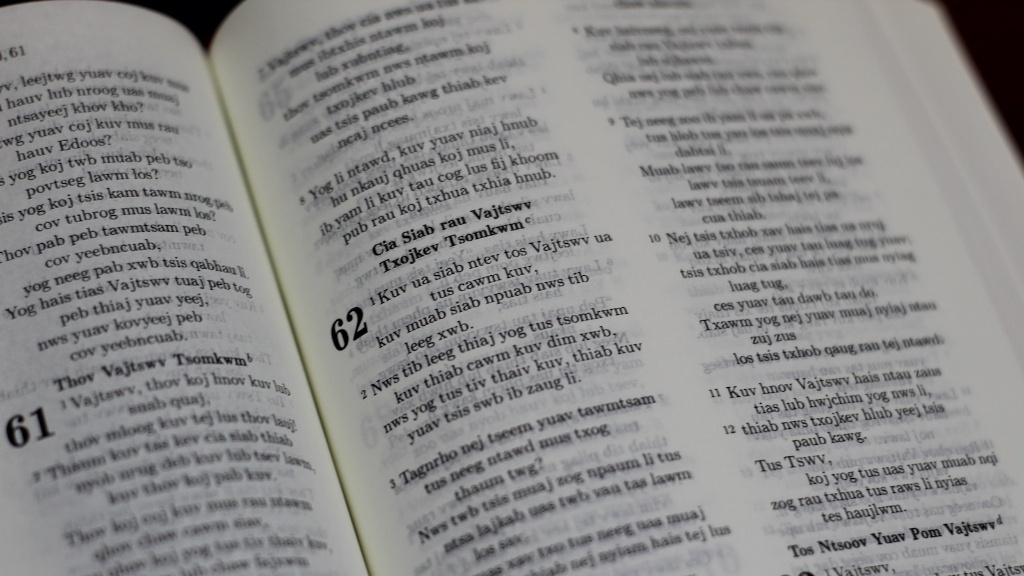The Bible is one of the world’s most iconic religious books. It has been translated into hundreds of languages over the years and is revered by millions of people across the globe. However, it wasn’t always so widely accepted or even available for the masses. In fact, the Bible we know and revere today didn’t even exist before King James.
Since the dawn of Christianity, there have been multiple versions and translations of the Bible circulating throughout Europe and the Middle East, adapted and reworked over the centuries by Christian scholars and theologians. During the Medieval period, local languages and dialects began to exist alongside Latin, and prompted the need for translations of the Bible in those languages.
These early versions were memorized and shared in the churches of the day, but it wasn’t until 1454, when Gutenberg’s printing press came onto the scene, that the Bible began to become more widely available. The mass production of books meant that the Bible could be printed quickly and bought for a fraction of the cost. Many popular versions, such as the Latin Vulgate, were made available, and it wasn’t long before the first English translation was being produced.
The first translation into English was in 1535 and was commissioned by King Henry VIII. It was known as the Great Bible and was the first Bible printed in English. This version, however, was far from perfect and was packed full of errors and translated badly. This prompted other English versions to be created, and the first revision of King James’ Version was published in 1611. It became popular because it was the first to use the English language accurately and clearly, which made it easier to understand.
King James wanted this version to be the authoritative version of the Bible, and he tasked a team of 54 scholars to produce the revised version. This final edition eventually came to be known as the Authorized Version, and it was the first Bible to be widely accepted and used by the Church of England. It has remained the standard version over the years and has been translated into many other languages since then.
Today, King James’ Version of the Bible is the most widely used and most popular version in the world, and it is seen by many as a powerful source of comfort and guidance. It is a powerful testament to the importance of faith and the influence that an authoritative text can have on people throughout the ages.
Other Languages In Bible
Over the years, there have been numerous translations of the bible into different languages in order to make it more accessible to people all around the world. Some of the languages in which the Bible has been translated into are Greek, Latin, Hebrew, Aramaic, German, French, Spanish, Chinese, Korean, and Swahilli. Each translation of the Bible is thought to bring its own unique interpretation to the text, and as such, some of these translations may be better suited to particular cultures or regions than others.
In particular, the translation of the bible into Greek and Latin has been instrumental in keeping the bible relevant and available to those who may not speak other languages. The Greek translation, known as the Septuagint, and the Latin translation, known as the Vulgate, both became popular during the Middle Ages and remained so for centuries, even up until the age of King James.
The Vulgate in particular was particularly important in that it was the first translation of the Bible into a language other than Hebrew. This is one of the reasons why it became so popular at the time, as it meant people could actually read, understand and interpret the bible in a language more closely related to the one they spoke.
In addition, the translations of the Bible into different languages have enabled the bible to have a much wider reach, making it possible for people who do not speak English to study the scriptures and develop a better understanding of the bible’s teachings.
Impact Of King James On The English Bible
The revision of King James’ Version of the Bible had a huge impact on the English language and also on the English Bible. It was the first version of the Bible to make use of the English language correctly and clearly, which made it easier for the average person to understand and interpret the scriptures.
In addition, it was the first version to be widely accepted by the Church of England, which meant that it had a greater impact on the way people interpreted scripture in the English language. This had an even bigger impact when it was eventually translated into other languages.
Finally, it was King James who commissioned a team of scholars to revise the Great Bible and create the Authorized Version. This meant that the Bible in English was not only easier to understand but also far more accurate than ever before.
Key Figures In Bible Translation
Throughout the years, key figures in the history of the bible have been essential in helping to ensure that translations of the Bible remain accurate and that the scriptures remain accessible to all. While King James’ Version of the Bible is the most popular version, others such as John Wycliffe and William Tyndale are equally important.
John Wycliffe was the first to make an English language translation of the Bible in the 14th century, although his work was not widely accepted until the 16th century. William Tyndale also contributed to the cause; he was the first to make an English language translation based on the original Hebrew and Greek texts. His version was also the first to use English words rather than Latin terms, which helped to further popularize the English language version of the Bible.
The impact of their work was felt not just in the English language, but also in German, French and Spanish, as their translations served as the foundation for later versions in those languages. The contributions of these key figures in the history of the Bible are instrumental in keeping the scriptures relevant and accessible to people around the world.
Modern Bible Translations
The publication of King James’ Bible in 1611 revolutionized the way in which people interpreted the scriptures; it provided an authoritative interpretation of the Bible in English which created a lasting impact throughout the years. Today, modern translations of the bible have been made available in different languages, allowing people to access the scriptures in their own language.
These modern versions of the bible are based on the original Hebrew and Greek texts, and are often more accurate, as they take into account more of the latest scholarly research and technology. In addition, they also incorporate more of the original cultural and social context, making it easier to interpret the scriptures.
The modern translations of the Bible are a testament to the power of faith and the ability of the scriptures to bridge the gap between different cultures. They enable people of all backgrounds to interpret the Bible in their native language and to come to their own conclusions and interpretations of the text.
Conclusion
It is clear that the Bible has had an immense impact on the world throughout the ages. From its beginnings as an oral tradition to its eventual and widespread acceptance in the days of King James, the Bible has been at the forefront of religious study and spiritual guidance.
The emergence and subsequent translations of the Bible into different languages have allowed people of all backgrounds to access the scriptures and to find comfort, guidance and meaning in their own language. The revisal of King James’ Version has been particularly influential in popularizing the Bible in English, and its legacy is still felt today with modern translations of the bible.





